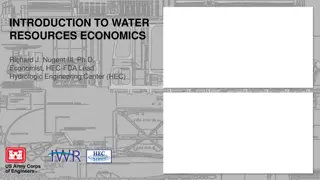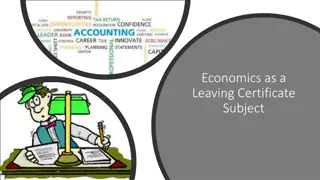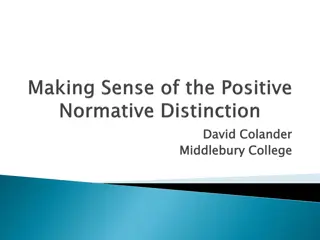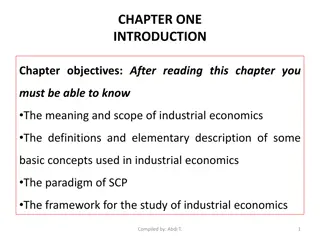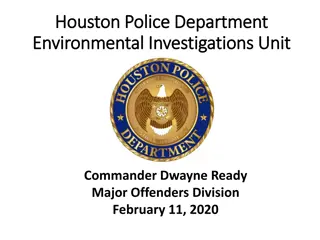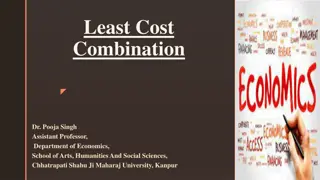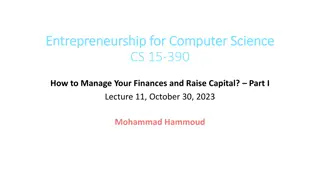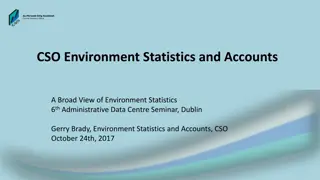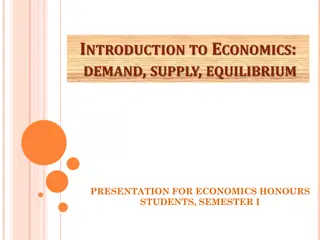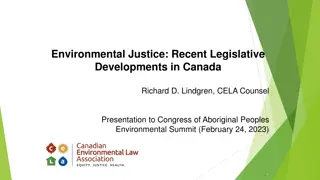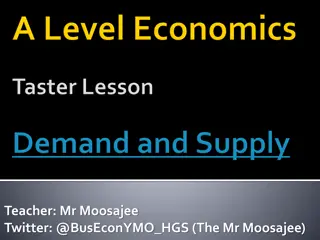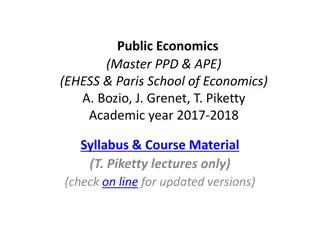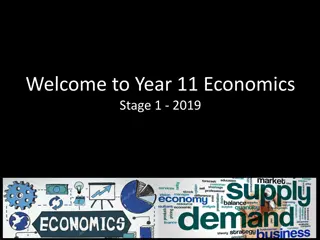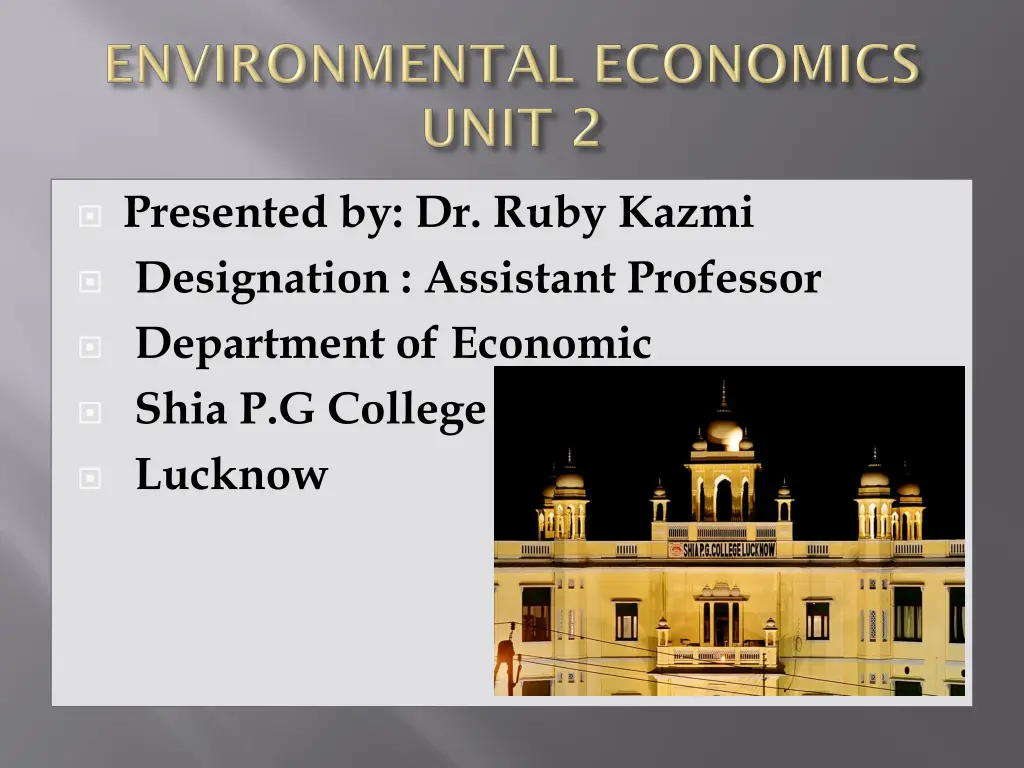
Understanding Environment and Development Debate
Explore the intricate relationship between environment and development, delving into concepts like economic development, environmental stress, and the Kuznets curve. Discover how human needs, industrial progress, and the quest for a balanced growth environment intersect in shaping our world.
Download Presentation

Please find below an Image/Link to download the presentation.
The content on the website is provided AS IS for your information and personal use only. It may not be sold, licensed, or shared on other websites without obtaining consent from the author. If you encounter any issues during the download, it is possible that the publisher has removed the file from their server.
You are allowed to download the files provided on this website for personal or commercial use, subject to the condition that they are used lawfully. All files are the property of their respective owners.
The content on the website is provided AS IS for your information and personal use only. It may not be sold, licensed, or shared on other websites without obtaining consent from the author.
E N D
Presentation Transcript
Presented by: Dr. Ruby Kazmi Designation : Assistant Professor Department of Economic Shia P.G College Lucknow
The term environment is understood not as an area surrounding a small place but as one that affects the existence and survival of the organisms it surrounds . People over the world have varied needs , to satisfy all of which ,they turn to the environment.
It is ironic that most dictionaries define development as gradual advancement or growth through a series of progressive changes ; also , the result of developing , or a development state . For the purpose of this debate we focus on economic development which is basically a process of developing and maintaining suitable economic ,social and political environment , in which balanced growth may be realized . Economic development may be traced back to the industrial revolution and to the development that has taken place in the industrial world .
Human beings have been essentially designed a creatures looking for ways and means to constantly improve their lives .Development may be viewed as a drug holding the answer to fulfilling the human needs .But lately the side effects of this wonder drug have become painfully obvious ; the focus of which has mainly rested on the environment . Development has had both positive and negative effects on the environment and herein lies the kernel of the debate. Both environment and development have a wide understanding and meaning. Therefore, it is imperative to clearly define the two terms and the framework within which they will be operating.
Environmental stress can be defined as the emotional , cognitive and behavioral responses to an environmental stimulus ( or stressor ) . Much of the research on environmental stress focuses on examining how different environmental stimuli affect such psychological consequences . The physical environment affects people in many ways, how they feel, what they think and how they act. When the demands of the physical environment outweigh an individual s ability to deal with those demands, stress occurs. Environmental stress refers to a negative subjective psychological response to an environmental stimulus. It is important to note that an environmental stimulus that is stressful for one person in a particular situation may not be stressful for another or for the same person in a different situation. As such, environmental stress is an interaction between an individual and an external stimulus.
The Kuznets curve is a hypothetical curve that graphs economic inequality against income per capita over the course of economic development which was presumed to correlate with time . This curve is meant to illustrate economic simon kuznet s hypothesis about the behaviour and relationship of these two variables as an economy develops from a primarily rural agricultural society to an industrialized urban economy.
Simon Kuznets hypothesized that as an economy develops , market forces first increase then decrease the overall economic inequality of the society ,which is illustrated by the inverted u- shape of the kuznet s curve.
As a society industrializes, the center of the economy shifts from rural areas to the cities. Rural laborers such as farmers begins to migrate seeking better paying jobs . This migration , however ,results in a large rural urban income gap and rural populations decrease as urban populations increase . This economic inequality is expected to decrease when a certain level of average income is reached and the process associated with industrialisation ,such as democratization and the development of a welfare state, take hold.
CRITISISM Kuznet s himself emphasized the fragility of his data among other caveats in his paper. It is representation of historical differences in economic development and inequality between countries . More countries had undergon rapid economic growth . Workers migrated agriculture to industry and Rural workers moved to urban jobs Increase in inequality Democratisation Equality
Sustainable development is a development that meet the needs of the present without compromising the ability of future generations to meet their own needs . Sustainable development is the practice of developing land and construction project in a manner that reduces their impact on the environment by allowing them to create energy efficient model of self - sufficiency . This can take the form of installing solar panels or wind generators or factory sites using geothermal heating techniques .
According to Mutofa K Tolba (of UNEP), the concept of sustainable development implies : Help for the very poor because they are left with no option other than to destroy their environment . Ideas of self reliant development , within natural resources constraint. The great issues of health control ,appropriate technologies , food ,self reliance ,clean water and shelter for all. The notion that people centred initiatives are needed ; human being in other words , are the resources in the concept .
The sum total of all the physical , chemical , biological and social factors surrounding a man may be termed as environment . Each element in the surrounding forms resource on which the human beings depend , in order to develop economically and socially a better life system .
The resources which can be renewed along with their exploitation and can be always available for use are known as renewable resources . That is these resource have natural generation and these are in exhaustible . For example air, forest , solar energy etc .
The resources which are present in fruit quantities and can not be renewed along with their exploitation are known as non renewable resources . That is if these resources are used in large scale , these will exhausted soon . So these are also known as exhaustible resources . Some examples of such type of resources are coal , minerals , fossil fuels etc.
Resource scarcity is the lack of availability of necessary supplies required to maintain life or a specific quality of life , and is one of the fundamental ideas that economics due to the facts that human wants are unlimited in quantity but the various resources we have available on our planet to fill human needs are limited and therefore, must be rationad and carefull choices must be made in distribution of resources .
Identify Scan the environment for resource scarcity risks that will move a specific resource from a state of availability to one of scarcity. Recognize Identify scarcity impacts on resources , including where used in what qualities scarce resources appear in product supply chains. Mitigate Create stragegies that avoid the use of scarce resources in product designs while increasing the focus on recovering and reclamatiom. Promote Educate skate holders an advocate with industry and government for policies that controls and mitigate the impact of natural resource scarcity .
Availability ,use and renewability of natural resources pose a serious problem in decision making on environmental issues . There is often lack of information and knowledge about sourcing , availability , likelihood of alternative states of environment , how these states and actions may combine to form outcomes and the net benefits of different outcomes .
Extraction of a natural resource impose environmental cost on society. The aesthetic cost of strip mining , the occupational health hazard associated with coal mining and the acids leached into streams from mine operators are example of associated environmental cost . The cost of extraction and sale including user cost is borne by the resource owner and is taken account of in the calculation of how much of the resource to extract . The environmental damage that results from extraction of natural resources however is an external cost which is not borne by the owner and as such it will not be a part of the extraction decision.
Eugine, T: Environmental Economics Karpagam, M: Environmental Economics ML, Jhingon: Environmental Economics From Wikipedia Dr. Ashok Kumar Kaithal

